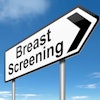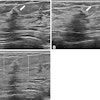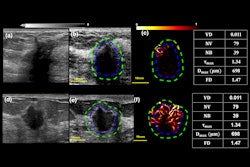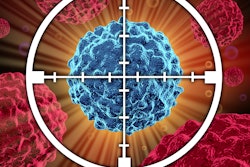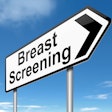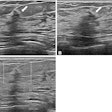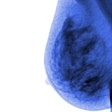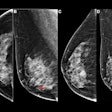AI may help find more mass and nonmass breast lesions on targeted ultrasound, according to research published July 27 in the European Journal of Radiology.
A team led by Isadora Lima, MD, from A.C. Camargo Cancer Center in São Paulo, Brazil, found that a commercially available AI software improved specificity compared with assessments performed by radiologists alone.
"[AI’s] use in this context may aid biopsy decision-making for lesions classified as probably benign or low suspicion on MRI, increasing radiologists' confidence in avoiding unnecessary procedures," Lima and colleagues wrote.
Targeted ultrasound identifies lesions found on breast MRI that had not previously been identified on initial mammography and ultrasound exams. An ultrasound correlation to MRI translates to higher odds of malignancy, while benign findings can help women avoid potentially unnecessary and invasive treatment.
While AI’s potential continues to be evaluated in breast imaging settings, the researchers noted a lack of data on AI’s use in classifying breast lesions in targeted ultrasound exams. To address this knowledge gap, Lima and colleagues assessed the performance of commercially available AI software (Koios DS Breast, Koios Medical) for predicting malignancy risk in breast lesions found on targeted ultrasound. The software classified imaging findings as benign or probably benign (BI-RADS 2/3), low or intermediate suspicion (BI-RADS 4A/4B), or high suspicion or probably malignant (BI-RADS 4C/5).
The study included 334 breast lesions, of which 183 were masses and 151 were nonmass lesions. Histological analysis revealed 257 benign lesions and 77 malignant lesions.
While sensitivity remained high with or without AI assistance, combining AI assistance with radiologist interpretation significantly increased specificity compared with unassisted interpretation by radiologists (p < 0.001).
Impact of AI’s performance on targeted breast ultrasound interpretation | |||
Measure | Radiologist alone | AI alone | AI + radiologist |
Sensitivity | 100% | 100% | 100% |
Specificity | 12.8% | 19.5% | 28% |
Positive predictive value | 25.6% | 27.1% | 29.4% |
Negative predictive value | 100% | 100% | 100% |
Accuracy | 32.9% | 38% | 44.6% |
The team also found that all lesions classified as BI-RADS 2 or 3 on targeted ultrasound by the radiologist or the AI software (n = 72, 21.6% of 334) showed benign pathology results.
The team suggested that the AI software could serve as a valuable second reader for targeted ultrasound interpretation.
"In clinical practice, this could improve efficiency by enhancing radiologist confidence in downgrading lesions, particularly in cases that are borderline or equivocal," the authors wrote.
They also called for future studies with larger multicenter cohorts to validate their results.
The full study can be found here.


